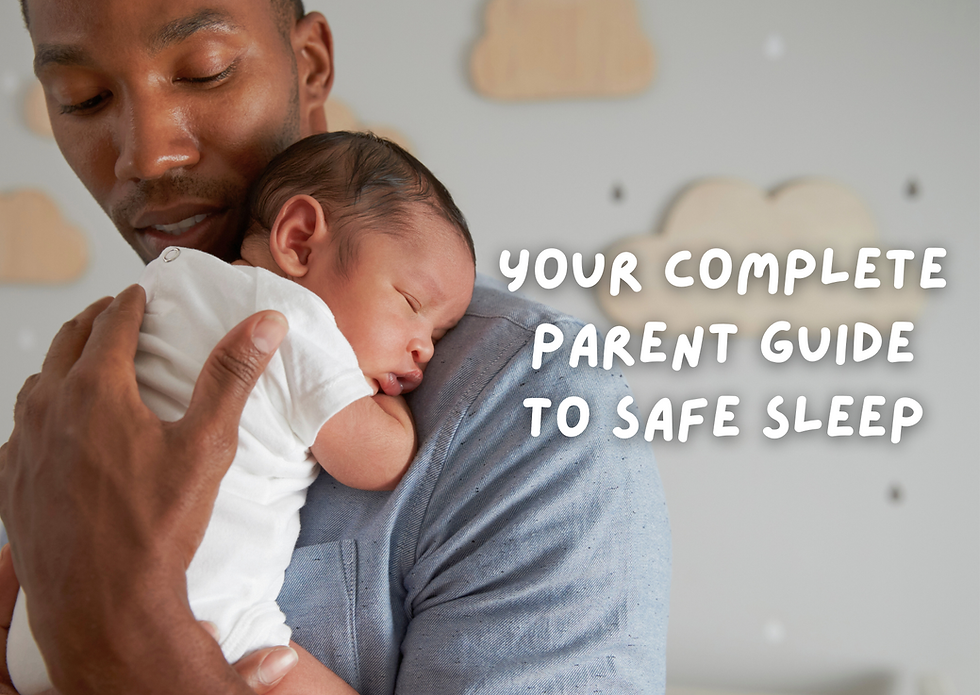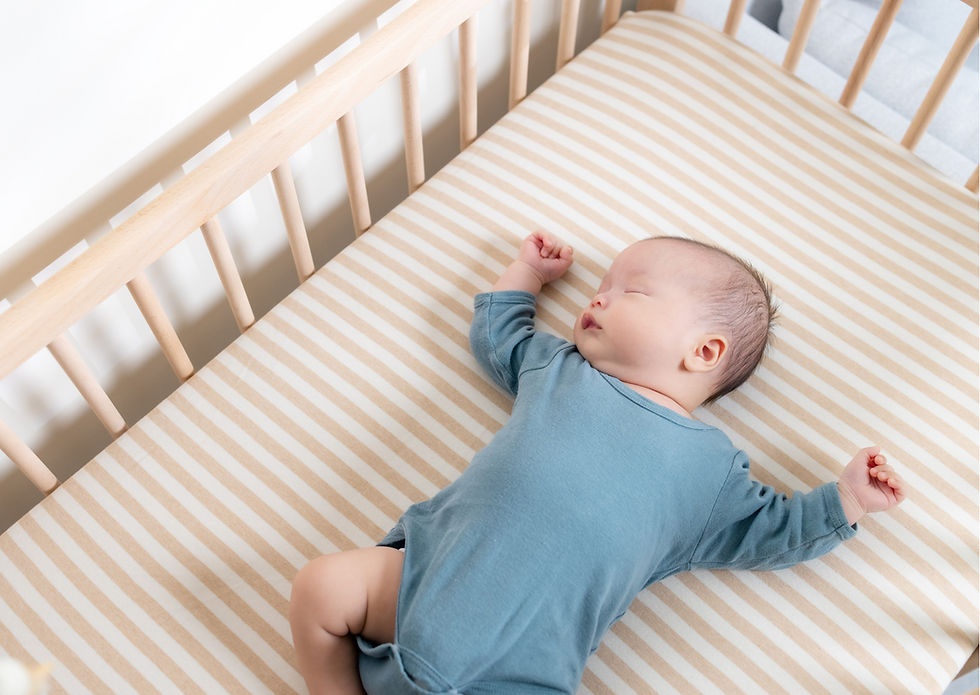Your Complete Parent Guide to Safe Sleep & Understanding SIDS
- emilias918
- Jul 24
- 4 min read

Creating a safe sleep environment for your baby is one of the most important steps you can take to protect their wellbeing.
Whether you're welcoming a newborn or navigating life with a curious crawler, understanding Sudden Infant Death Syndrome (SIDS) and how to prevent it is vital.
While SIDS is rare, it remains one of the most tragic risks during infancy.
This guide aims to empower parents and carers with the most up-to-date advice and practical steps to keep babies sleeping safely — and give you peace of mind.
Let’s jump straight into our guide to safe sleep & understanding SIDS.
What Is SIDS?
Sudden Infant Death Syndrome (SIDS) is the sudden and unexplained death of a seemingly healthy baby, usually during sleep and most commonly within the first 6 months of life. It’s sometimes referred to as “cot death,” and tragically, it tends to occur with no warning signs.
While the exact causes remain unknown, decades of research have helped identify clear ways to significantly reduce the risk—mostly by following consistent, safe sleep guidance.
Experts believe that SIDS may be linked to a combination of factors, including:
Immature brain function – particularly in the areas that control breathing and waking up from sleep.
Environmental stresses – such as overheating, tobacco exposure, or sleeping in an unsafe position.
Underlying health vulnerabilities – that may not be diagnosed or visible.
Though incredibly rare, the emotional impact of SIDS is devastating, which is why raising awareness and sticking to the safest possible sleep routines is so important for every family.

Safe Sleep – All You Need to Know
Always Place Your Baby on Their Back
This is the safest position for all sleep, including naps. Lying on their back greatly reduces the risk of SIDS.
Once your little one can roll independently, they can find their own sleeping position, but always start them on their back.
During the day, supervised tummy time is important for building strength and coordination — just not for sleep.
Use a Clear, Flat and Separate Sleep Space
The safest sleep environment for a baby is a cot, crib, or Moses basket that meets safety standards.
Use a firm, flat mattress with no padded or raised areas,
No duvets, pillows, sleep positioners, bumpers or loose bedding,
Keep the space free from toys, cords, or nappy sacks,
Baby’s head should remain uncovered — place feet to the foot of the cot,
If using a baby sleep bag, no additional bedding is needed,
Never let babies sleep in bouncy chairs or car seats (unless travelling).
Sleep in the Same Room for the first 6 months
Babies should sleep in the same room as their parents for all sleep (day and night) for at least the first 6 months.
Being nearby helps monitor your baby and reduces the risk of SIDS.
Avoid These Sleep Practices
Never let your baby sleep on a sofa or armchair — this increases SIDS risk by up to 50%,
Avoid nests, pods, and wedges — these are not recommended for safe sleep,
Don’t place your baby to sleep on their front or side,
Avoid overheating – dress your baby appropriately and monitor room temperature (more on that below).

Co-Sleeping: Safety First
Co-sleeping means your baby is sleeping on the same sleep surface as an adult, such as a bed.
While it’s a personal choice for many families, co-sleeping can increase the risk of SIDS, especially if not done safely.
Never Co-Sleep If:
Your baby was premature or had a low birthweight (under 2.5kg),
You or anyone sharing the bed has smoked, drunk alcohol, or used medication or drugs that make you drowsy,
Your baby is placed between two adults, in a nest or pod, or near soft bedding.
If You Choose to Co-Sleep:
Place your baby on one parent’s side, not between adults,
Position the baby at chest height with the parent’s lower arm extended and a bent knee forming a protective space,
The parent should avoid using duvets or blankets — instead, wear long PJs to stay warm,
Your baby should sleep in a baby sleep bag,
Remove pillows or keep them well away from baby’s face,
Keep pets and other children out of the bed,
Never leave your baby alone in an adult bed.
A Moses basket or cot next to your bed is often a good compromise if co-sleeping doesn’t feel right for your family.
Understanding Overheating
Overheating is a risk factor for SIDS. Keep your baby’s sleep environment between 16–20°C. A simple room thermometer is a helpful tool.
To keep your little one cool:
Dress them in light sleepwear,
Choose sleep bags with the correct tog rating for the season,
Keep curtains closed during the day and windows open if safe,
Avoid overdressing or over-layering at bedtime.
Create a Smoke-Free Environment
Exposure to smoke significantly increases the risk of SIDS.
Avoid smoking during pregnancy or after birth,
Keep babies away from smoke at home, in cars or public spaces,
If you or someone in your household smokes, seek support to quit — the NHS offers helpful, non-judgemental resources.
If You’re Worried or Have Questions
You're not alone. It can be overwhelming to keep track of everything, especially as a new parent. The most important thing is to stay informed and trust your instincts.
If you're ever concerned about your baby’s health, seek medical advice immediately. For non-urgent concerns, speak to your health visitor, GP or nursery manager — they’re here to help.
NHS 111 (non-emergency advice)
999 in an emergency
Useful Resources




Comments